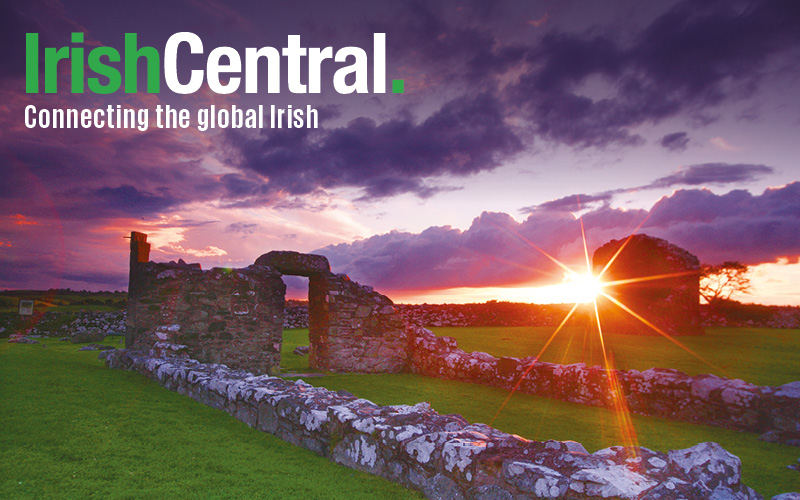When you’re ready to explore beyond Dublin city, there are plenty more treasures in store for you. Follow the horseshoe curve of Dublin Bay from Howth to Dalkey or step back from the coastline and head for the mountains. You’ll uncover a wonderland of activities, lively villages and exciting trails – all steeped in that inimitable Dublin character.
Take your time. Hop on the DART (the commuter train that curves around the bay and gives the best views!) and discover picture-postcard streets, superb cafés and restaurants, grand piers and wonderful food markets.
Visiting Dublin's coastal villages is like a stroll through history. Howth is famous for its Viking past; Dun Laoghaire is all gracious early 19th century; Malahide gives a glimpse of habitation going as far back as 6000 BC around a place called Paddy’s Hill; while Dalkey’s Coliemore Harbour was once an important port for exports – now the stillness is only broken by the bobbing of small fishing boats.
Go for a bracing dip at the 40 Foot in Sandycove, take an island boat trip from Howth or Malahide, go sailing in Dun Laoghaire or maybe kayak your way up the River Liffey. You could even go hiking in the Dublin Mountains. Besides the spectacular views, these heather-topped hills are packed with legendary tales!
Read more: Dublin mountain walk named among 1001 to experience before you die
Three to try outside Dublin
*Have a pint in Finnegan’s in Dalkey – Bono is a local!
*Make it to Malahide Farmers’ Market on Saturdays for great local produce.
*Tuck into the best fish and chips ever at Beshoff’s of Howth.
Read more: 10 things to see and do for free in Dublin
1,000 Years of History
Invaders and bloodshed, empire and rebels, scandal, beauty and culture – if it’s colorful history you’re after, Dublin has the lot. Handel’s "Messiah," rebel gunfire, the harsh lives of the poor and the swish of silk-clad aristocrats, and all within an incredibly small area.
Follow the story-filled Dublin Discovery Trails – each will take about two hours on foot – around the city, from Kilmainham Gaol and Trinity College up to Parnell Square. You'll almost hear the whispers of the past on your journey.
The Vikings had good taste – they certainly liked the look of Dublin in 841AD and it’s been a popular spot ever since.
Over the centuries, the city has been a magnet for saints, scholars, poets, playwrights and dreamers – and, of course, a sprinkling of dissolute aristocrats. Explore these ancient streets and find out where holy relics pulled in the pious, where speculators gambled, where scandals were hushed up, and where culture flourished.
Amid gracious Georgian architecture, Handel premiered his “Messiah” and rival gangs of apprentices and butcher boys fought in the streets; and as some of the finest literature in the world was being written in fashionable salons, Dubliners rioted against oppressive laws.
Follow the Stories of Dublin Discovery Trail where you can revel in the city’s glories – and uncover its occasionally disreputable past.
“Where I go, fashion will follow,” declared the haughty, super-rich Duke of Kildare, and the result – Leinster House – was so grand it’s now home to Ireland’s government. Back in the 1740s, it changed the shape of the city, as the Protestant aristocracy hurried to build houses nearby to show off their wealth, in stark contrast with the terrible conditions of the city’s poor.
Take the Empire Discovery Trail and stroll around the colonnades of the Bank of Ireland or past City Hall to find where high society met to gossip, gamble and flirt.
Dublin Castle was the heart of British rule, while further up Dame Street young bluebloods studied at Trinity College. By 1800, Dublin was bustling and fashionable, the second largest city in the British Empire. That changed, though, with the Act of Union, as the aristocrats departed and the city fell on hard times.
Not everyone left Dublin to starve, however. The Guinness family used their vast wealth to help those less fortunate, arranging for St Stephen’s Green to become a public park, building houses and providing work for the poor.
Ireland’s capital city was a cauldron of discontent for 200 years before the Easter Rising of 1916: those six days that shook Dublin and heralded the birth of a nation.
The Rebellion Discovery Trail takes in the spot where the Rising ended, in Conway’s pub on Parnell Street, scene of revolutionary Padraig Pearse’s surrender to the British. And finally, take a while to remember the generations of freedom fighters commemorated in the Garden of Remembrance, which is dedicated “to all those who gave their lives in the cause of Irish freedom.”
Take the Echoes of War Discovery Trail and you can almost hear the sound of marching feet. In an almost forgotten chapter of history, thousands of Dublin’s men and women enlisted to help the British Army in the trenches and medical centers of World War I. In hidden corners, you can find testament to their sacrifice: monuments and cemeteries and hospitals where shattered soldiers were slowly nursed back to life.
Five historical highlights
*Collins Barracks (also the National Museum of Ireland Decorative Arts & History)
*Kilmainham Gaol
*Heuston Station
*The Royal Hospital Kilmainham
*National War Memorial Gardens




Comments